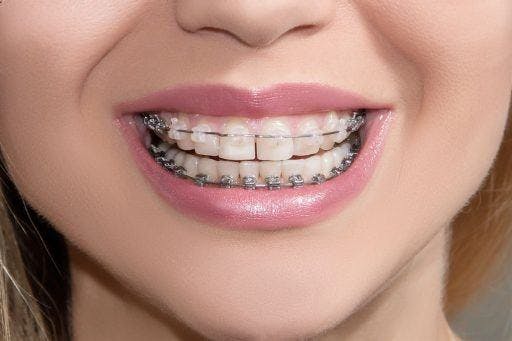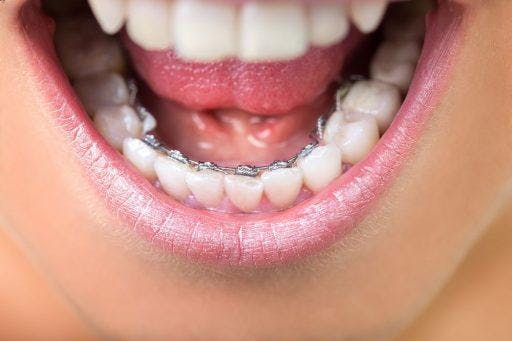Adult braces get a bad rap in the media. Think of Drew Barrymore’s Josie Grossie in the ’90s flick Never Been Kissed or America Ferrera’s turn as Ugly Betty in the 2000s sitcom. No one can blame you for thinking wearing braces isn’t “cool” in your teens, much less when you’re older.
But the times they are a-changin‘ – more people are rejecting strict beauty ideals and shedding the shame. Instead, there’s a shift towards embracing yourself and doing whatever makes you happy. If that means getting braces as an adult, then go for it.
Why adults should get orthodontic treatment

The good news – it’s not yet too late to get braces. There is so much value in taking care of yourself, working on your smile, and building your self-confidence. Plus, straight teeth offer numerous oral health benefits – they improve your bite, are less prone to cavities, and are a breeze to clean.
Attitudes about appearances aren’t the only thing that’s different now – orthodontic treatment isn’t what it used to be, either. You have more braces options to choose from with varying degrees of visibility.
Who is orthodontic treatment suitable for?
Orthodontic treatment is ideal for those who want to address specific dental issues affecting their smile and overall oral health. It’s not just about aesthetics – correcting misalignments can improve chewing, speaking, and overall dental health.
Your dentist may recommend orthodontic treatment if you have:
- Crooked or crowded teeth
- Open bite
- Overjet
- Buck teeth
- Underbite
- Crossbite
- Deep bite
- Edge-to-edge bite
- Midline shift
- Gaps or spacing issues
- Incorrect biting patterns
- Jaw misalignment and other related issues
Orthodontic appliances can realign your teeth and correct your bite, making everyday functions more comfortable and enhancing your oral health.
To begin your journey, take this online smile assessment today. Then, consult your dentist for a detailed diagnosis and personalised treatment plan.
Types of braces for adults
Are you looking for something barely visible, or do you want to go the traditional route? Learn more about the different types of adult braces.
Option #1: Traditional metal braces
Do traditional braces come to mind when you hear about orthodontics? You’re likely thinking of the metal variety, which straightens teeth with steel brackets, flexible wires, and elastic bands.
These components make metal braces very visible when you smile. You can lean into this feature by customising elastics in your favourite colours for a pop of personality. And since braces come affixed to teeth, you’ll never have to worry about misplacing them if you go for this option.
However, food particles are more likely to get stuck in their nooks and crannies. Some wearers may struggle to brush and floss thoroughly because their braces are in the way. Some may also have trouble adjusting since braces typically exert more pressure than removable aligners.
Option #2: Ceramic braces

Ceramic braces function similarly to metal-wired braces. Their main difference lies in their materials. The former is also known as “clear braces” because they use tooth-coloured brackets with ceramic or porcelain. This makes these braces more subtle despite the visible wire running through them.
Apart from the usual cons that come with fixed appliances, ceramic braces have the added downside of having larger, less durable brackets. And since they’re the colour of teeth, they’re easier to stain and harder to keep clean. You’ll have to be extra careful about the foods and drinks you consume and be more diligent about oral hygiene.
Option #3: Self-ligating braces
Self-ligating braces use special brackets with a mechanism that holds wires in place, which allows wearers to forgo ligatures – or elastics – altogether. For some, the lack of elastic bands can make these braces less apparent on teeth vs. traditional braces. The Australian Society of Orthodontics (ASO) also notes food particles are less likely to get caught in ligature-free brackets.
Option #4: Lingual braces

Lingual braces are as inconspicuous as fixed appliances can go. Some call them “inside” braces because they’re attached to the inside of teeth. Onlookers won’t be able to see them unless you open your mouth wide and point them out. In that regard, they’re even more subtle than aligners.
Even if it’s easy to forget that you’re wearing them, you’ll still need to take the same precautions as traditional braces. That means watching what you eat and keeping up with oral care, no matter how inconvenient or difficult. The ASO notes that wearers may have some initial difficulty with speech and have “greater potential for tongue irritation and ulceration” as lingual braces sit close to the tongue.
Option #5: Clear aligners

Clear aligners are the most discreet of the bunch. They’re also known as “invisible” aligners because of their virtually undetectable appearance. As such, they’re a popular choice among adults who don’t want to draw attention to their treatment. Since they’re removable, they’re also generally nondisruptive to daily life. You can take them off for meals, oral hygiene tasks, and risky sports.
ClearCorrect aligners consist of a tri-layer, medical-grade material called ClearQuartz, which makes them incredibly durable – more so than many others in the industry. You can count on them to maintain their shape and grip over time. They apply gentle yet consistent pressure on teeth, treating misalignment without excessive force.
What to expect when getting braces
Your dentist will guide you through the entire process to ensure effective treatment and help you achieve your goals. Here’s what you can expect:
Before the procedure
A consultation with your orthodontist is crucial. During this appointment, your orthodontist will:
- Review your overall and oral health
- Assess your teeth and bite
- Conduct X-rays and other imaging scans
- Take dental impressions
- Fit you for the orthodontic device
Avoid at-home treatments that promise quick fixes – they lack the precision for effective results.
The procedure
The installation process usually takes 1 to 2 hours and typically involves:
- Cleaning and drying your teeth
- Applying adhesive to attach brackets
- Installing wires into the brackets
- Securing the braces with elastic bands
You may experience some discomfort as your gums, tongue, and cheeks adjust to the braces. You might also find chewing and speaking slightly challenging.
After the procedure
Your mouth will adapt to the braces within a week or two, with reduced sensitivity and soreness. To ensure effective treatment and avoid breakages, watch your diet. Avoid hard, chewy, crunchy, and sticky foods. Also, maintain excellent oral hygiene; never skip brushing and flossing.
Expect some soreness and discomfort after adjustments, but this should not interfere with your daily activities.
How long do you have braces for?
Treatment duration varies for every patient. The American Association of Orthodontists emphases that adult teeth are no longer growing; the bone tissue has already reached full maturity and density. This extends treatment time compared to younger patients. Other factors like missing teeth, fillings, implants, and diseases may also affect treatment duration.
But on average, patients need to wear fixed braces for 18 to 24 months. For less severe cases, treatment can be between six to 12 months.
The same goes for clear aligners. The only catch is you must keep them on for at least 22 hours daily for maximum efficiency. But most patients will tell you the trade-off is worth it for the ease, comfort, and eventual results.
Are you leaning towards clear aligners? Ultimately, the best adult braces for you will depend on your case and your dentist’s assessment. So, book a dental appointment and communicate your needs and preferences. Soon, you’ll be on your way to securing healthy, well-aligned teeth.
References:
Australian Society of Orthodontists. (2021). Self-Ligating Braces vs Normal Braces. Orthodontics Australia.
Australian Society of Orthodontists. (2023). Lingual braces: What are they and how much do they cost? Orthodontics Australia.
Australian Society of Orthodontists. (n.d.). What are the options when it comes to braces for adults? aso.org.
Australian Society of Orthodontists & The University of Sydney. (2019). Lingual Braces. Creating Brighter Futures.



